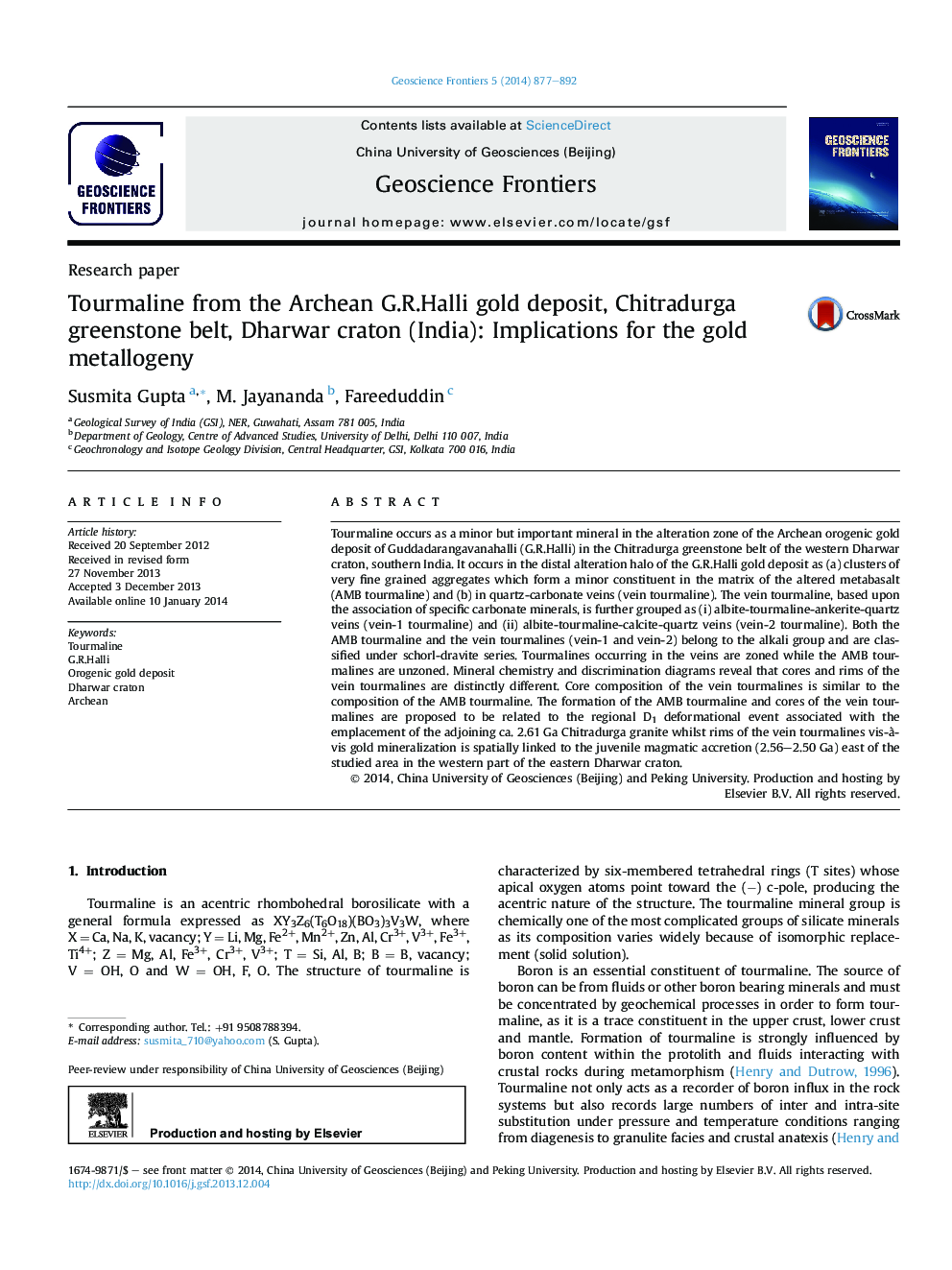| کد مقاله | کد نشریه | سال انتشار | مقاله انگلیسی | نسخه تمام متن |
|---|---|---|---|---|
| 4681694 | 1348867 | 2014 | 16 صفحه PDF | دانلود رایگان |

• Tourmaline occurs in the distal wall rock alteration halo of the Neoarchean G.R.Halli gold deposit, Dharwar craton, India.
• It belongs to the alkali group and classifies under schorl-dravite series.
• Core and rim chemistry of these tourmalines are related with two different geological events.
Tourmaline occurs as a minor but important mineral in the alteration zone of the Archean orogenic gold deposit of Guddadarangavanahalli (G.R.Halli) in the Chitradurga greenstone belt of the western Dharwar craton, southern India. It occurs in the distal alteration halo of the G.R.Halli gold deposit as (a) clusters of very fine grained aggregates which form a minor constituent in the matrix of the altered metabasalt (AMB tourmaline) and (b) in quartz-carbonate veins (vein tourmaline). The vein tourmaline, based upon the association of specific carbonate minerals, is further grouped as (i) albite-tourmaline-ankerite-quartz veins (vein-1 tourmaline) and (ii) albite-tourmaline-calcite-quartz veins (vein-2 tourmaline). Both the AMB tourmaline and the vein tourmalines (vein-1 and vein-2) belong to the alkali group and are classified under schorl-dravite series. Tourmalines occurring in the veins are zoned while the AMB tourmalines are unzoned. Mineral chemistry and discrimination diagrams reveal that cores and rims of the vein tourmalines are distinctly different. Core composition of the vein tourmalines is similar to the composition of the AMB tourmaline. The formation of the AMB tourmaline and cores of the vein tourmalines are proposed to be related to the regional D1 deformational event associated with the emplacement of the adjoining ca. 2.61 Ga Chitradurga granite whilst rims of the vein tourmalines vis-à-vis gold mineralization is spatially linked to the juvenile magmatic accretion (2.56–2.50 Ga) east of the studied area in the western part of the eastern Dharwar craton.
Figure optionsDownload as PowerPoint slide
Journal: Geoscience Frontiers - Volume 5, Issue 6, November 2014, Pages 877–892